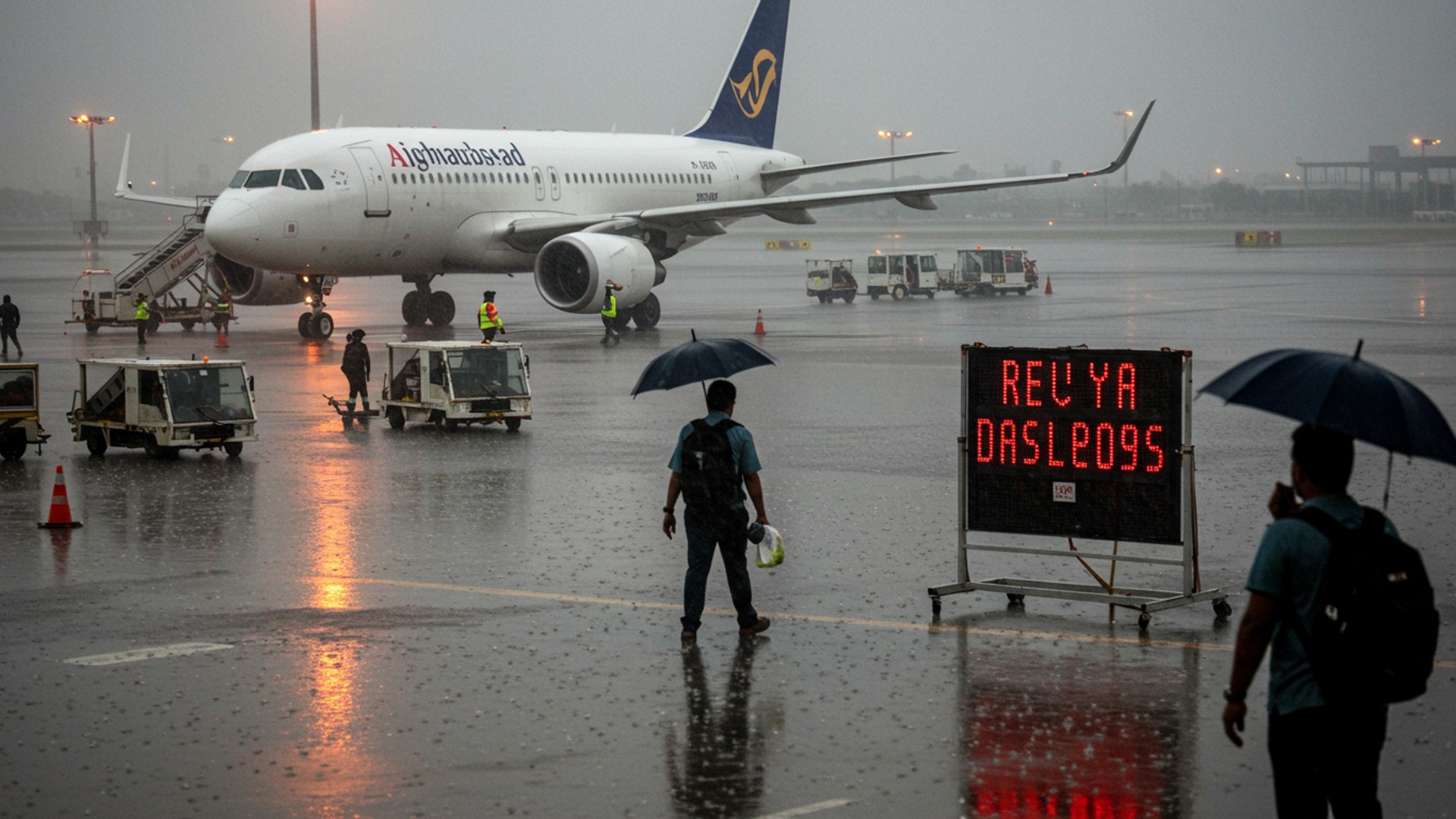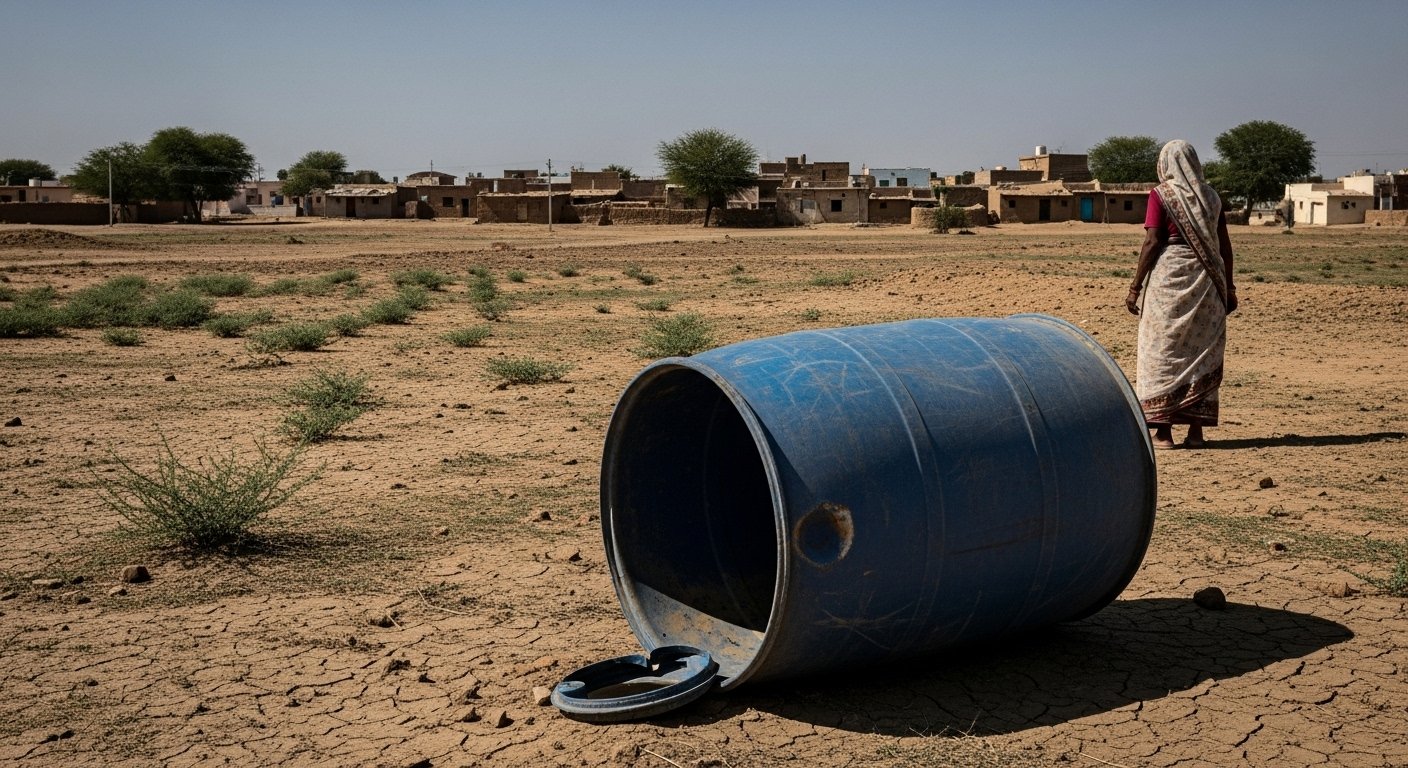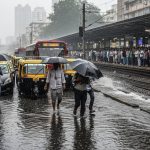Ahmedabad is battling the full force of the monsoon today as relentless rains bring the city to a standstill. Sardar Vallabhbhai Patel International Airport has halted all flight operations due to the severe weather, leaving travelers stranded and disrupting air travel. Weather authorities have issued an urgent orange alert for the region, warning of extremely heavy downpours and the high risk of widespread flooding across streets and low-lying areas. As water levels rise rapidly, residents are urged to stay indoors, with officials highlighting the immediate dangers posed by the ongoing monsoon fury that continues to grip Ahmedabad.
Heavy Rains Hit City
Ahmedabad has been battered by extremely heavy rainfall over the past 24 hours, bringing the city to a standstill. The intense downpour has led to widespread waterlogging across many areas, causing significant disruption to daily life. The city, which typically experiences its monsoon season from June to September, has seen an unusual surge in rain intensity, particularly in a short span of time. This heavy rain is a common feature of the monsoon in Ahmedabad, a city prone to flooding due to its flat alluvial plains and numerous water bodies.
Reports from various parts of the city indicate that low-lying areas are especially affected. Streets have turned into virtual rivers, making travel nearly impossible for vehicles and pedestrians alike. The sudden increase in water levels has trapped many people in their homes and workplaces, highlighting the immediate challenges posed by the monsoon’s fury. This rapid accumulation of water underscores the city’s ongoing struggle with drainage issues during intense rain spells.
Airport Shuts Down
Sardar Vallabhbhai Patel International Airport (SVPIA) in Ahmedabad has halted all flight operations due to severe waterlogging on the runways and around the terminal building. The decision was made to ensure the safety of passengers and aircraft, as visibility dropped to dangerous levels and the runways became unusable. This halt has led to numerous flight delays, diversions. cancellations, impacting hundreds of travelers.
An airport official stated, “Due to extreme weather conditions and heavy waterlogging on the airfield, flight operations have been temporarily suspended. We are continuously monitoring the situation and will resume services as soon as it is safe to do so. Passengers are advised to check with their respective airlines for updated flight data.”
Images and videos circulating on social media show parts of the airport submerged in knee-deep water, reflecting the scale of the challenge faced by airport authorities. While airport authorities have previously taken steps as part of their monsoon contingency plans, the sheer volume of this recent rainfall has proven overwhelming.
A table outlining the impact on flights is as follows:
| Flight Status | Number of Flights | Impact |
|---|---|---|
| Cancelled | 15 | No service for affected routes |
| Delayed | 45 | Waiting for conditions to improve |
| Diverted | 8 | Redirected to nearby operational airports like Mumbai |
Orange Alert in Place
The India Meteorological Department (IMD) has issued an ‘Orange Alert’ for Ahmedabad, signaling the likelihood of continued heavy to very heavy rainfall in the coming hours. An orange alert means that there is a heightened risk of flooding in streets, streams. vulnerable zones. This level of warning advises citizens to be prepared for severe weather conditions that could disrupt daily life.
According to an IMD spokesperson, “An Orange Alert indicates that rainfall exceeding 115. 6 mm and up to 204. 4 mm is expected within 24 hours. Residents should take all necessary precautions and stay indoors if possible. The weather system causing this intense rainfall is being closely tracked.”
The forecast suggests that intense rain will continue over the region, with the possibility of isolated extremely heavy falls. This alert is crucial for residents to comprehend the potential risks, including widespread waterlogging, disruptions to transportation. possible power outages. The IMD utilizes a color-coded system to simplify complex weather data and communicate the degree of risk to the public.
Life in the City Affected
The relentless rainfall has brought normal life in Ahmedabad to a standstill. Major roads and underpasses are heavily waterlogged, leading to massive traffic jams and making commuting extremely difficult. Public transport services, including local buses and rickshaws, have been severely impacted, with many routes suspended or operating with significant delays.
Areas such as Prahladnagar, Anandnagar, SG Highway, Shivranjani, Thaltej, Shela, Bopal, Isanpur, CTM. Ghodasar have reported substantial downpours and subsequent flooding. Even parts of the Walled City area, historically prone to such issues, are facing severe waterlogging. Power outages have also been reported in several localities as a result of the adverse weather conditions, adding to the difficulties faced by residents.
Essential services are also facing challenges. Delivery services and online taxis are operating with surge pricing or are largely unavailable, further limiting movement for those without personal vehicles. The continuous rain has also raised concerns about public health, with authorities advising against the consumption of unfiltered water and street food to prevent waterborne diseases.
Government Action and Help
In response to the severe weather, the Ahmedabad Municipal Corporation (AMC) and state authorities have activated their monsoon preparedness plans. The AMC has launched seven zonal control rooms that operate round-the-clock to address rain-related issues, including hazardous billboards, collapsed structures, tree falls, potholes, road cave-ins. waterlogging.
A statement from the AMC highlighted their efforts: “High-capacity pumps have been installed at 21 underpasses to drain rainwater swiftly. Experienced personnel with walkie-talkie sets are deployed for effective coordination. Cleaning of over 63,000 catch pits for rainwater is underway. an extensive desilting of drain lines has been completed.”
The state government, led by the Chief Minister, has reviewed the situation and directed district collectors to remain alert and constantly monitor conditions. Emergency response teams, including police and fire services, are on standby to assist citizens in distress. The police are also deployed in larger numbers for traffic management, issuing diversions and temporary blockades where necessary to ensure some level of traffic flow.
Citizens can lodge complaints related to rain-related issues through dedicated WhatsApp numbers assigned to each zone, aiming to streamline communication and enhance response times. This proactive approach seeks to minimize the impact of the heavy rainfall on the city’s infrastructure and residents.
Safety Warnings for Residents
Given the orange alert and the ongoing severe weather conditions, authorities have issued several safety warnings for residents of Ahmedabad. People are strongly advised to avoid unnecessary travel and to stay indoors unless it is absolutely essential. This measure is crucial to prevent accidents on waterlogged roads and to minimize exposure to potential hazards.
Specific precautions include:
- Avoiding waterlogged areas, as they may hide open manholes or damaged roads.
- Exercising extreme caution around electrical poles and wires to prevent electric shocks.
- Unplugging electronic devices to protect them from power surges during thunderstorms.
- Ensuring that vehicles, if driven, have good tires and working brakes. driving at a safe, reduced speed.
- Monitoring official weather updates and alerts issued by the IMD and local authorities regularly.
- Keeping emergency contact numbers handy, including those for the AMC control room and disaster management services.
Residents are also encouraged to clear drains and trim plants within their residential complexes to prevent blockages and reduce local waterlogging. Community cooperation is vital in managing the effects of such heavy monsoon conditions.
Looking Ahead
The India Meteorological Department’s latest forecast indicates that the intense rainfall activity may see a slight reduction in intensity in the immediate next few days, though light to moderate showers with thunderstorms are still expected across most of Gujarat. But, isolated heavy rainfall may continue in certain districts. The monsoon season in Ahmedabad typically lasts until September. the city receives a significant portion of its annual rainfall during this period.
Authorities will continue to monitor the weather patterns closely and update advisories as needed. The focus remains on managing water levels, restoring normal city services. ensuring public safety. Residents are urged to remain vigilant and follow all instructions from local government bodies. The long-term outlook for the monsoon season predicts normal to above-normal rainfall for Gujarat, highlighting the need for ongoing preparedness for potential future heavy rain events.
![]()













